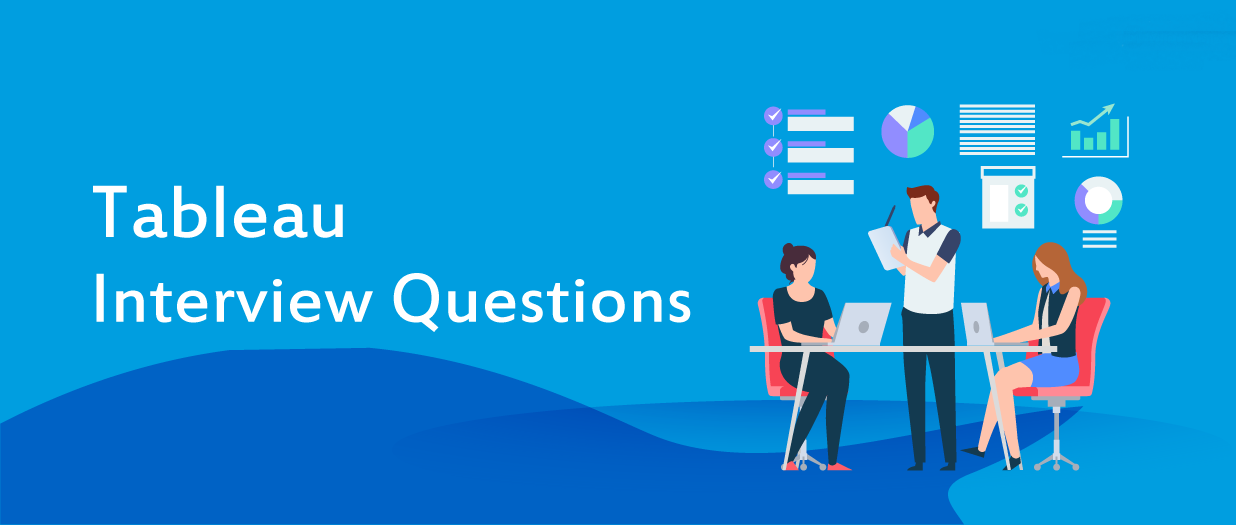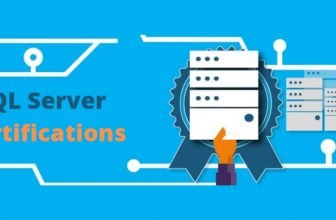Tableau Interview Questions and Answers for 2021

It’s time to turn your dreams of turning into a Tableau developer into reality through practicing those Tableau interview questions with their answers for 2021.
The team curates these Tableau interview questions to help you face out on your Tableau interview and get the first-class being a Tableau Developer, Tableau solution Architect, Tableau Analyst, etc.
This text will discuss the vital Tableau interview questions and answers to comb up your competencies.
Top Questions
Q.1. What is Tableau?
Tableau is a records analytics and commercial enterprise intelligence platform that is flexible and clean to use, making sure it is easy to revel.
The primary pillars of power for Tableau are interactive dashboards, quick responsiveness, and data counting.
Also, it offers a huge range of eye-catching snapshots or visualizations to symbolize your facts set pictorially like charts and graphs.
Basically, Tableau provides all the competencies that are the basis of work like data extraction, processing, representing/visualizing, and sharing the very last reports/dashboards/worksheets with others.
Q.2. What are the advantages of the use of Tableau?
There are a whole lot of benefits of Tableau, which include:
- Speed
- Ease of use
- Beautiful and interactive dashboard
- Direct connection
- Easy publishing and sharing
- Growing market share and recognition
Q.3. What are the primary functions of Tableau?
- The reason the back of Tableau gaining an enormous reputation in little time is its attractive set of features and functionalities.
- Some key capabilities of Tableau are:
- Drag-and-drop capability
- Variety of local records connectors
- records highlights and filters
- Percentage dashboards
- Dashboard embedding
- Mobile-geared up dashboards
- Facts notifications
- Tableau Reader (for records viewing)
- Dashboard commenting
- Growing “no-code” facts queries
- Queries to visualization conversions
- Import records of all sizes
- creating interactive dashboards
- developing guided stories
- Metadata control
- Automatic updates
- Safety permissions at any level
- Tableau Public for statistics sharing
- Server relaxation API
- ETL refresh
Q.4. What is Tableau Server? Speak its additives.
- Tableau Server is a verbal exchange tool. This is utilized in sharing visualizations and information connection information with the quit-users or clients.
- It is a crucial issue within the operating of Tableau because it's miles designed to manipulate and execute critical techniques.
- Tableau Server includes several components such as:
- Gateway
- Utility Server
- Repository
- VizQL Server
- Data engine
- Backgrounder
- Statistics Server
- seek and License
Q.5. Can you explain the Tableau design float?
The layout or logic flow in Tableau is as follows:
- Connecting to the statistics supply thru the connectors to be had in Tableau.
- Create statistics view, this is, creating visualizations like charts, graphs, and so forth.
- Improving the facts perspectives using superior Tableau strategies.
- Growing unique worksheets so that we can have one-of-a-kind information views from identical or unique records.
- After worksheets, we will create dashboards that can be organizing specific and relevant records perspectives in a single view for reporting.
- Using these dashboards or workbooks, we can create tales to express the language of records better.
Q.6. What are record extract files in Tableau?
The statistics extract documents are the ones that include a local copy of the whole dataset, or in other words, we take a subset of records from the supply.
The Tableau information Extract files have a “.tde” extension.
They no longer include a record course or records about the facts supply, workbooks, dashboards, etc.
Real-time questions
Q.7. What is the way to create a .tde document in Tableau?
To create a Tableau records Extract (.tde) record, we ought to
- go to the information tab gift at the Tableau toolbar's top left.
- Pick a statistics supply.
- Click at the Extract information option.
- Then, both choose fields from the information supply or click on Extract to create a statistics extract document (.tde) of the entire records set from the facts supply.
Q.8. What is a Tableau Dashboard?
A dashboard is a group of different data perspectives.
Exclusive information perspectives are ideas of visualizations that we create on Tableau.
We can convey together special elements from a couple of worksheets and placed them in a single view on a dashboard.
Q.9. What are person features in Tableau?
The user functions in Tableau are specific functions that we use to carry out operations at the registered customers on Tableau Server or Tableau Online.
We use the person functions to apply user-specific filters or row-degree security features on Tableau users.
For instance, if we need to restrict a view to just one person, we will use one of the person's functions. A few generally used consumer capabilities are FULLNAME, ISFULLNAME, ISMEMBEROF, ISUSERNAME, USERNAME, USER DOMAIN so on.
Q.10. What is the distinction between Tableau Workbook and Tableau Packaged Workbook?
Both the Tableau Workbook and Tableau Packaged Workbook are file sorts utilized in Tableau.
The Tableau Workbook type of report carries information about worksheets and dashboards, which can be present within a Tableau workbook.
The Tableau Workbook files have an extension as .twb.
We can handiest create these files from a stay statistics connection and percentage them with users gaining access to that stay connection.
These are the top TABLEAU INTERVIEW QUESTIONS and answers for 2021.






